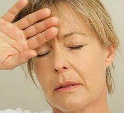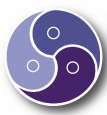Hot flashes and night sweats are common symptoms for women taking tamoxifen following breast cancer. This study investigates the possibility of traditional Chinese acupuncture being used to help manage these symptoms and thus improve quality of life.
Method
Fifty participants with early breast cancer completed a course of eight weekly acupuncture treatments. All of the women were 35+ years old, over six months post-active cancer treatment, had been taking tamoxifen for over six months, and had four or more incidents of hot flashes and night sweats every 24 hours for last three months or more.
The outcome was measured using ‘hot flash diaries’, Women’s Health Questionnaire, and Hot flashes and Night Sweats Questionnaire. Measurements were taken at five points within a 30-week time scale.
Results and Conclusion
The mean frequency of hot flashes and night sweats was reduced by 49.8% at the end of treatment.
The perception of hot flashes and night sweats was reduced by 2.2 points. This indicated that the participants subjectively found their symptoms less bothersome following acupuncture treatment.
There were also significant improvements in other symptoms such as anxiety/ fear, memory/ concentration, menstrual problems, sexual behavior, and sleep problems.
The study concluded that the results compared favorably with previous studies that looked at acupuncture for the management of hot flashes and night sweats, as well as research on non-hormonal pharmaceutical treatments. In addition, there were other significant improvements in general well-being.
Ref: Using traditional acupuncture for breast cancer-related hot flashes and night sweats. J Altern Complement Med. 2010 Oct;16(10):1047-57
Gepost in Geen categorie ~ Geen Reactie
Acupunctuur verzacht spierpijn. De naalden stimuleren de aanmaak van de natuurlijke pijnstiller adenosine.
Volgens de traditionele Chinese geneeskunde zou je met behulp van acupunctuur de veertien energiebanen waardoor je levensenergie of chi stroomt, kunnen beïnvloeden. Hoewel de methode al 2.500 jaar bestaat, staat de westerse geneeskunde er nog steeds sceptisch tegenover en wordt het effect van de naaldentherapie in de regel toegeschreven aan het placebo-effect. Nieuw onderzoek, gepubliceerd in het gerespecteerde vakblad Nature Neuroscience, levert het bewijs dat bepaalde acupunctuurtoepassingen wel eens wetenschappelijk verantwoord zouden kunnen zijn. Bij muizen met een ontstoken pootje dan toch. Britse neuronwetenschappers gaven muizen een traditionele acupunctuurbehandeling, waarbij dunne naalden dertig minuten lang in de huid werden gebracht en om de vijf minuten gedraaid werden. De onderzoekers plaatsten de naalden op een specifiek punt in de knie – het Zusanlipunt – dat overeenkomt met een traditioneel acupunctuurpunt bij de mens.
Het resultaat was verbluffend: de pijnreactie bij de beestjes nam met twee derde af, en in het weefsel rond de naalden bleek de concentratie van adenosine – een natuurlijke pijnstiller – met een factor 24 te zijn vermenigvuldigd. Adenosine is een neurotransmitter die een belangrijke rol speelt in het onderdrukken van pijnsignalen.
Als dezelfde acupunctuurbehandeling uitgevoerd werd bij genetisch gemanipuleerde muizen die niet in staat waren om adenosine aan te maken, haalde dat niets uit. En bij niet-gemanipuleerde muizen die een middel kregen om de levensduur van adenosine te verlengen, hielden de pijnstillende effecten langer aan. Dat bewijst volgens de wetenschappers dat het wel degelijk de adenosine is die de pijn onderdrukt bij acupunctuur. Of de techniek ook bij mensen werkt, moet nog verder onderzocht worden.
BRON: University of Rochester, VK – EOS nr 7/8 juli/augustus 2010
Gepost in Acupunctuur, Chinese geneeskunde, Opleiding acupunctuur, Opleiding Chinese geneeskunde, Traditionele chinese geneeskunde ~ 1 Reactie
Repetitive stress injuries (RSI) are the most common job-related injuries and are responsible for the highest number of days lost among all work related injuries. One of the most well-known types of repetitive stress injury, carpal tunnel syndrome (CTS) accounts for over two million visits to physicians’ offices and approximately 465,000 carpal tunnel release operations each year, making it the most frequent surgery of the hand and wrist.
Symptoms of repetitive stress injuries include tightness, stiffness, pain, tingling, numbness, coldness and loss of strength in the arm. Carpal tunnel syndrome is a repetitive stress injury that refers specifically to the inflammation of a specific ligament that puts pressure on the median nerve.
Acupuncture is extremely effective for treating repetitive stress injuries including carpal tunnel syndrome; eliminating the need for surgery or the use of anti-inflammatory drugs or corticosteroids. In fact, one of the most common reasons that people get acupuncture is for repetitive stress injuries. Recent studies even suggest that acupuncture may be more effective than corticosteroids when it comes to treating CTS.
What is Carpal Tunnel Syndrome?
The carpal tunnel is a narrow passageway in the wrist made up of ligaments and bones. The median nerve and the tendons that connect the fingers to the muscles of the forearm pass through this tightly spaced tunnel.
Carpal tunnel syndrome, also known as median nerve entrapment, occurs when swelling or irritation of the tendons in the carpal tunnel results in pressure on the median nerve causing pain in the palm side of the wrist and pain and tingling in the fingers. The median nerve controls sensations to the palm side of the thumb and fingers, as well as impulses to some small muscles in the hand that allow the fingers and thumb to move.
Symptoms usually start gradually, with frequent burning, tingling, or numbness in the palm of the hand and the fingers, especially the index, middle and ring fingers. Pain can sometimes travel up the arm and affect the shoulder. The symptoms often first appear during the night. As symptoms worsen, people might feel pain, weakness, or numbness in the hand and wrist, radiating up the arm during the day. Decreased grip strength may make it difficult to form a fist, grasp small objects, or perform other manual tasks. If not properly treated, CTS can cause irreversible nerve damage and permanent deterioration of muscle tissue.
Diagnosis and Treatment of Repetitive Stress Injuries with Acupuncture
From an Oriental medicine perspective, a repetitive stress injury is seen as a disruption of the flow of Qi and Blood (Xue) within the area and associated with cold, dampness or wind penetrating the muscles and sinews. Acupuncture points, stretching exercises, herbal remedies and nutritional supplements are chosen to treat accordingly.
In addition to reducing the swelling, inflammation and pain, acupuncture addresses any headaches, neck pain, shoulder stiffness and sleeping problems that often accompany this condition. Your treatment may also take into account any underlying conditions that contribute to the development of RSI including posture, obesity, rheumatoid arthritis, thyroid problems, diabetes, and hormonal changes of pregnancy and menopause.
Reduce Your Repetitive Stress Injury Risk
Managing repetitive stress injuries often requires some lifestyle changes, and it can take time to work out a strategy that works best for you.
Here are a few minor changes you can implement to minimize stress on your hands and wrists:
Alternate Tasks – Avoid doing the same task for more than a couple of hours at a time and alternate between tasks that use different muscle groups where possible. Fatigue is a sign that you need to take a break. Take small breaks to gently stretch and bend your hands and wrists and readjust your position.
Reduce Pressure – Many people use more force than needed to perform tasks involving their hands, which can increase pressure and cause irritation. Be mindful of the speed and amount of pressure used to perform tasks. Ease up, slow down, and grip using your palm or whole hand to distribute the load. If using tools such as riveters or jackhammers for extended periods, take frequent breaks or operate the tool at a speed that causes the least amount of vibration.
Cultivate Good Posture - Incorrect posture can cause your shoulders to roll forward, shortening neck and shoulder muscles and compressing nerves in your neck, which can affect your wrists, hands, and fingers.
Shoulders and neck should be relaxed to open the chest and allow your head to float upwards without strain. When using a keyboard, wrists should be in a relaxed middle position and in a straight line with your forearms at elbow height or slightly lower.
Sources:
Acupuncture: A Comprehensive Text. By Shanghai College of Traditional Chinese Medicine, 1981
Plastic and Reconstructive Surgery: Volume 105(5) April 2000 pp 1662-1665
Gepost in Geen categorie ~ Geen Reactie
Een halve gram kurkuma (geelwortel, koenjit) per dag is gezond, zo blijkt uit een studie. Kurkuma verlaagt de bloedvetten en het beschermt de bloedvaten. Ook een daling van stress- en ontstekingsmoleculen en een stijging van het aantal antioxidanten in het speeksel bleken meetbaar. Zelfs een daling van het hersenplaque-proteïne kan gemeten worden, en dat is een sterke aanwijzing dat kurkuma beschermt tegen de ziekte van Alzheimer. Kurkuma heeft ten slotte een gunstig effect op de lever.
Kurkuma wordt meestal uitgetest bij zieke mensen, maar zelden bij gezonde mensen. Het extract dat de deelnemers moesten nemen, bevatte slechts 80 mg curcumine, de actieve stof uit kurkuma. Andere studies gebruikten extracten met 1 gram curcumine.
Deze studie toonde dus weldadige effecten van kurkuma die betrekking hadden op vele organen: bloedvaten, lever, hersenen. Een interessant kruid dus voor een optimale gezondheid.
Gepost in Chinese geneeswijzen, Opleiding Chinese geneeskunde, Traditionele chinese geneeskunde, Voeding ~ Geen Reactie
Electrical engineers in a medical research team discovered how acupuncture benefits sleep. They did it by measuring brain activity with EEG (electroencephalography) before, during and after an acupuncture treatment. Results were conclusive, acupuncture significantly increases slow wave activity of the brain relative to fast wave activity in both the frontal and central lobes. This phenomena is known to benefit the quality and duration of sleep.
EEG
The acupuncture point used in this study increases the delta band power density, a known sleep related brain wave band. In addition, acupuncture at this point downregulates alpha and beta band activity relative to delta band activity. The decreases in these bands also enhances sleep quality.
The researchers applied manual acupuncture to humans at acupoint ST36. It was found that this acupoint significantly increases the power ratio index of slow waves to fast waves following an acupuncture treatment. Stainless steel 0.2 mm diameter acupuncture needles were applied to the subjects. The needles were applied and retained for an initial two minutes followed by manual rotation of the needles applied for another two minutes. Measurements were taken throughout the brain of the delta (0 – 4 Hz), theta (4 – 8 Hz), alpha (8 – 13 Hz) and beta (13 – 30 Hz) bands. Notably, there were increases in the delta band power in five major brain areas during and after acupuncture.
The researchers note that “acupuncture at ST36 can induce obvious changes in different EEG rhythms in healthy subjects.” They also note that acupuncture modulations of brain activity resulting from acupuncture point stimulation show “that the brain plays a key role in acupuncture research.” They also suggest that “cortical electrical activities may be an important mechanism by which acupuncture exerts its complex multisystem effects.”
Gepost in Acupunctuur, Opleiding Chinese geneeskunde ~ Geen Reactie








